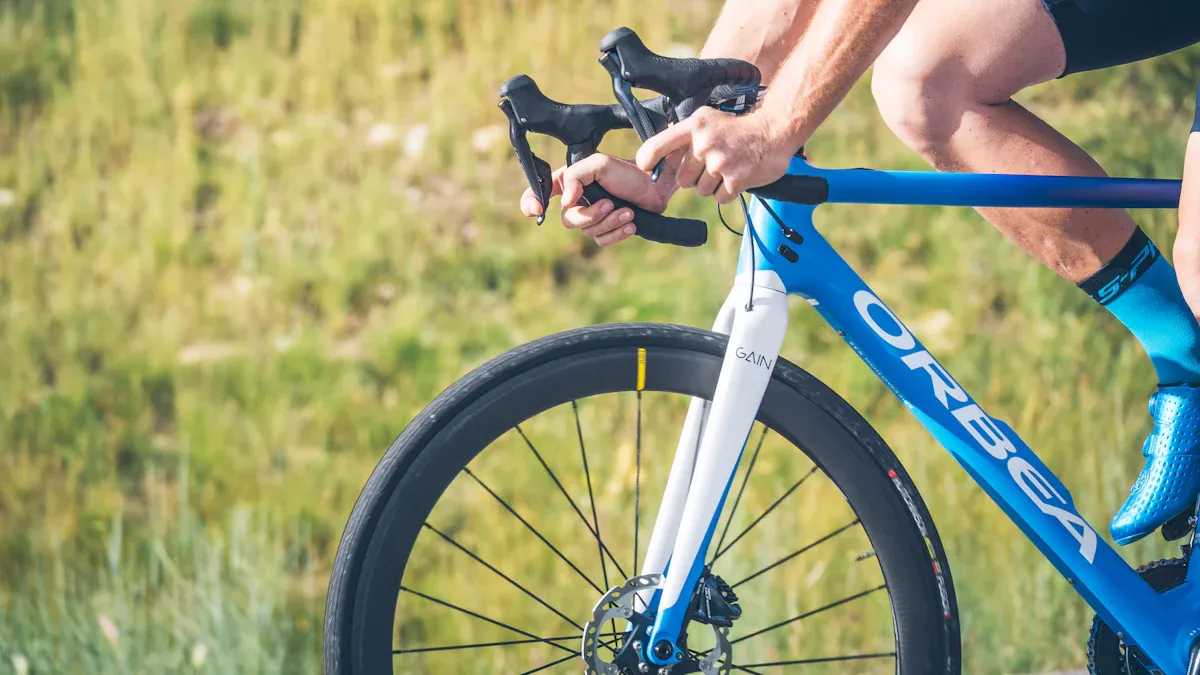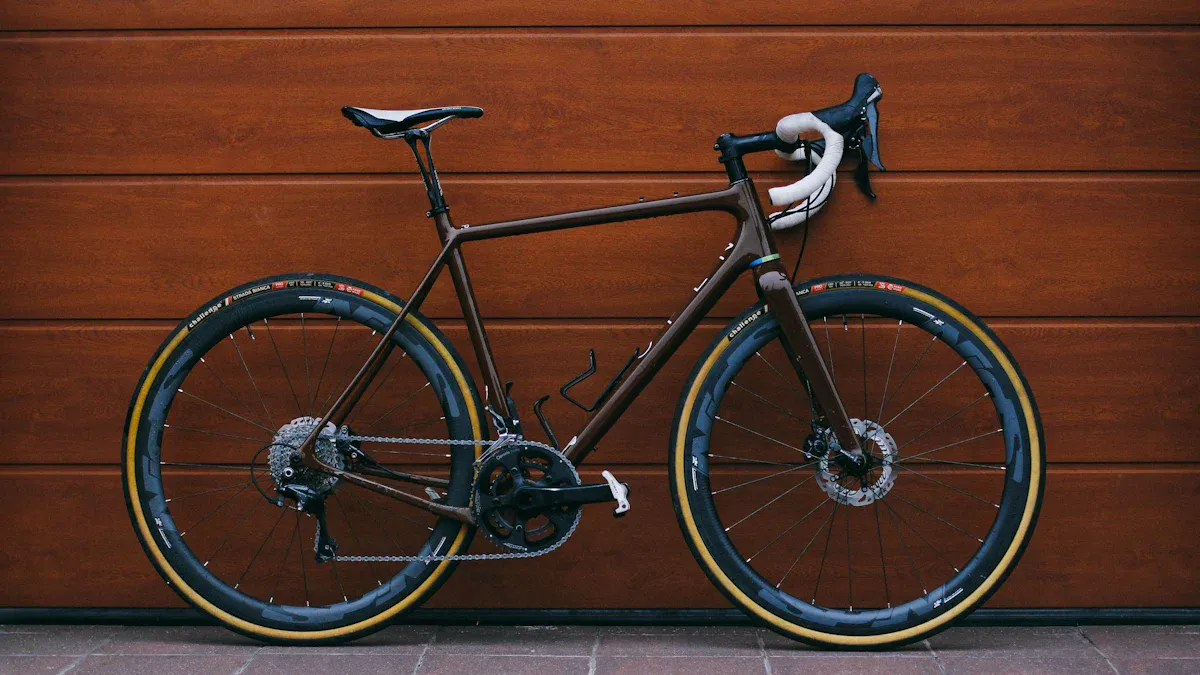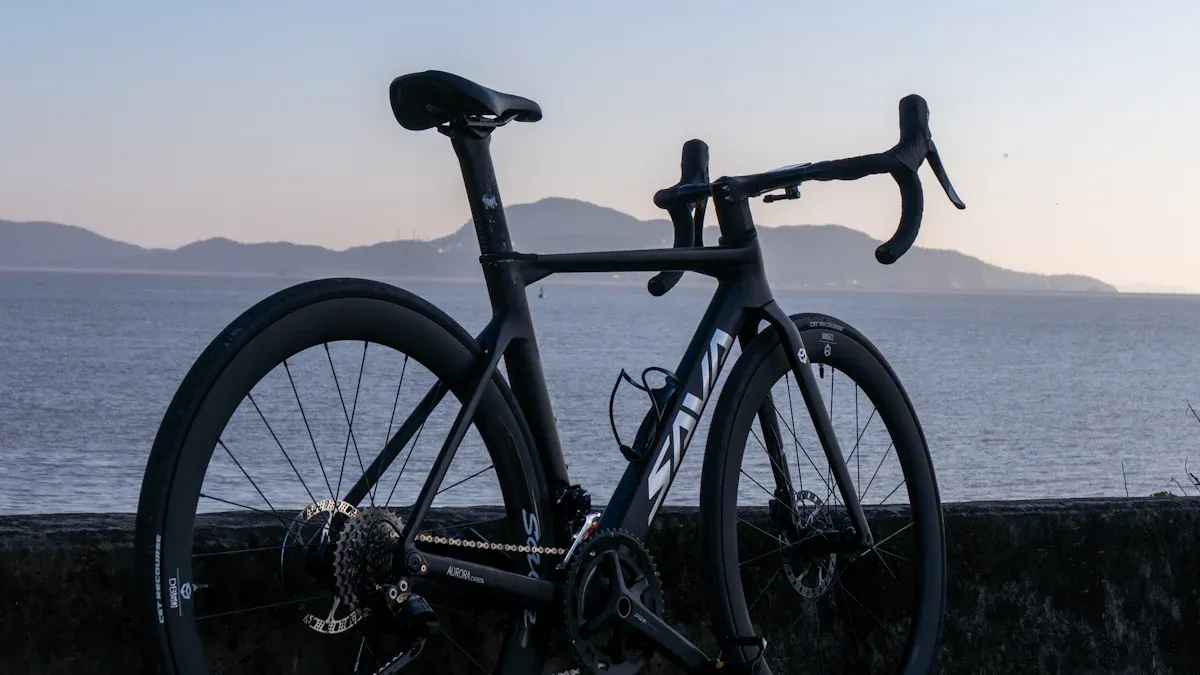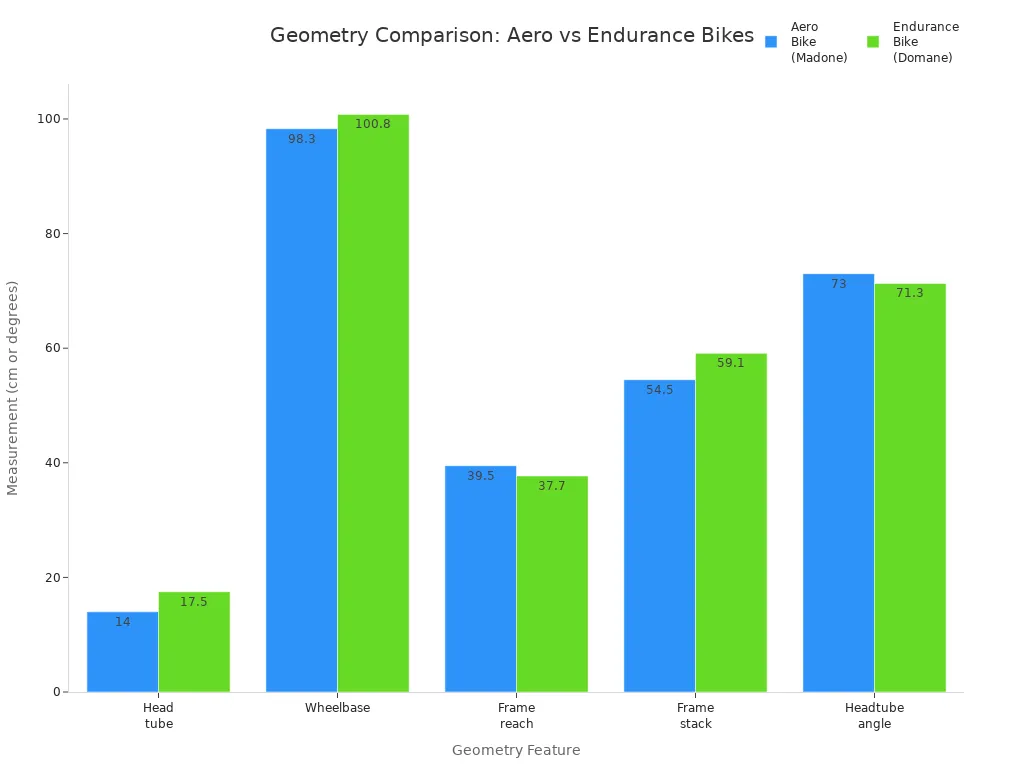
Choosing the right bike can be hard. There are many options to choose from, especially when considering the various road bike frame styles available. It is important to know the differences between these bike frame styles, as each design has a special purpose and fits different riding styles. Think about your riding goals and comfort, as well as how well the bike performs. This knowledge of road bike frame styles helps you make smart choices, ultimately enhancing your cycling experience.
Key Takeaways
Aero road bike frames are made for speed. They are great for competitive cyclists and time trials.
Endurance road bike frames focus on comfort and stability. They are perfect for long rides and casual cyclists.
Think about your riding style and the terrain when picking a bike frame. Aero frames work best on flat roads. Endurance frames are better for bumpy surfaces.
Check your budget, as aero frames usually cost more because of advanced technology.
Knowing the differences between frame styles helps you make smart choices. This leads to a better cycling experience.
AERO ROAD BIKE FRAME STYLES

Target Riders
Aero road bike frames are mainly for competitive cyclists. They are great for riders who want to go fast. These frames reduce wind resistance. This makes them perfect for time trials and races. Recreational cyclists who want to speed up also like these bikes. More amateur racers are using them because they want better performance.
Standout Features
Aero road bike frames have special features that make them different:
Aggressive Riding Position: You will see a more aggressive riding position. This helps with aerodynamics. It allows better power transfer and less wind resistance.
Geometry: These frames usually have a lower stack-to-reach ratio (about 1.45 or less) and a shorter head tube (around 140 mm). This design helps you lower your torso, which makes you faster.
Integrated Components: Many new aero frames have integrated parts like wheels and handlebars. These are made to reduce wind drag. For example, deep-section carbon wheels help with aerodynamics.
Feature | Contribution to Performance |
|---|---|
Better frame aerodynamics | |
Improved V-stem and handlebar | Makes adjustments easier, helps handling at high speeds |
New wheel designs | Boosts stability and cuts drag in windy conditions |
Wider tires (up to 34mm) | Saves over 5 watts compared to older models |
Deeper frame sections | Maximizes aerodynamic shapes, further reducing drag |
Disadvantages
Aero road bike frames have some downsides too:
Discomfort: Many users feel discomfort from stiffer aero tubes. The aggressive riding position can be uncomfortable on long rides.
Power Loss: If the riding position is too aggressive, it may cause power loss. Adjusting the saddle position and back angle is important for better performance.
Weight: Aero bikes are usually heavier than climbing bikes. This can affect climbing performance. While aerodynamics matter, weight also affects speed and efficiency.
Pro Example
A good example of an aero road bike is the TCR Advanced SL. This bike weighs about 38.43 grams and has a stiffness improvement of 3.38%. It is made for all-around performance with advanced aerodynamics. This makes it popular among competitive cyclists. The TCR Advanced SL shows how modern technology can improve both speed and handling. This makes it a top choice for serious riders.
ENDURANCE ROAD BIKE FRAME STYLES

Target Riders
Endurance road bike frames are for many types of cyclists. They are great for people who like long rides and want comfort. If you ride on bumpy roads or join gran fondos, these bikes are a good fit. Casual riders who prefer a relaxed position will also like endurance frames. These bikes give a stable and comfy ride, making them perfect for both experienced and new cyclists.
Standout Features
Endurance road bike frames have features that improve comfort and performance:
Relaxed Geometry: These bikes let you sit more upright. This helps reduce strain on your back and neck. You can ride longer without feeling sore.
Vibration-Damping Technologies: Many endurance bikes use systems like IsoSpeed or Future Shock. These features soak up bumps and vibrations, making your ride more comfortable.
Wider Tires: Endurance frames usually fit wider tires. This gives better grip and a smoother ride on different surfaces.
Here’s a comparison of key geometry features between endurance and aero bikes:
Geometry Feature | Aero Bike (Madone) | Endurance Bike (Domane) | Difference |
|---|---|---|---|
Head tube | 14cm | 17.5cm | Domane is +3.5cm |
Wheelbase | 98.3cm | 100.8cm | Domane is +2.5cm |
Frame reach | 39.5cm | 37.7cm | Domane is -1.8cm |
Frame stack | 54.5cm | 59.1cm | Domane is +4.6cm |
Headtube angle | 73 degrees | 71.3 degrees | Domane is -1.7 degrees |
Disadvantages
Endurance road bike frames have some downsides too:
Weight: These bikes are often heavier than aero bikes. This can slow down acceleration and climbing.
Speed: Endurance frames focus on comfort and stability. They might not be as fast as aero frames, which are made to cut drag.
Less Aggressive Handling: The relaxed design can make handling less responsive than racing bikes.
Pro Example
A great example of an endurance road bike is the Trek Domane. This bike has a relaxed design and advanced vibration-damping features. It helps you enjoy long rides with comfort. The Domane’s design ensures a smooth ride, making it popular among cyclists who value endurance and comfort over speed.

Choosing between aero and endurance road bike frames depends on how you ride and what you want. If you want speed and aerodynamics, an aero frame is best for flat roads and races. You can save a lot of energy. Studies show you can save 5-10 watts at 20 mph and over 20 watts at 26 mph. But if comfort and stability are more important, especially for long rides, an endurance frame is better for you.
Think about these things when you decide:
Riding Style: Are you racing or going for long rides?
Terrain: Will you ride on smooth roads or bumpy ones?
Budget: Prices can be different, and aero frames usually cost more.
In the end, knowing what you need will help you pick the right bike frame for a fun cycling experience. 🚴♂️
FAQ
What is the main difference between aero and endurance bike frames?
Aero bike frames are made for speed and cutting through the wind. Endurance frames are made for comfort and stability on long rides. Pick one based on how you ride and what you want.
Can I use an aero bike for long rides?
Yes, you can, but it might not feel good. Aero bikes have a design that can hurt your back and neck on long rides. An endurance bike is a better choice for comfort.
Are aero bikes heavier than endurance bikes?
Usually, aero bikes weigh more because of their design and materials. But the weight difference might not matter much unless you often climb steep hills.
Which bike frame is better for racing?
Aero bike frames are best for racing. They help you go faster by reducing wind resistance. If you want to race, an aero frame is the best choice.
How do I choose the right bike frame for me?
Think about how you ride, the type of roads, and what feels comfortable. If speed is important, pick an aero frame. If you care more about comfort on long rides, go for an endurance frame.
See Also
Selecting The Ideal Aluminum Road Bike Frame For You
Comparing Enduro Bike Frame Materials For Durability And Strength
Choosing The Best Bike Frame Type For Comfort And Speed
Key Features That Enhance Comfort And Speed In Road Bikes
Evaluating Carbon Race Bike Frames For An Exceptional Experience
